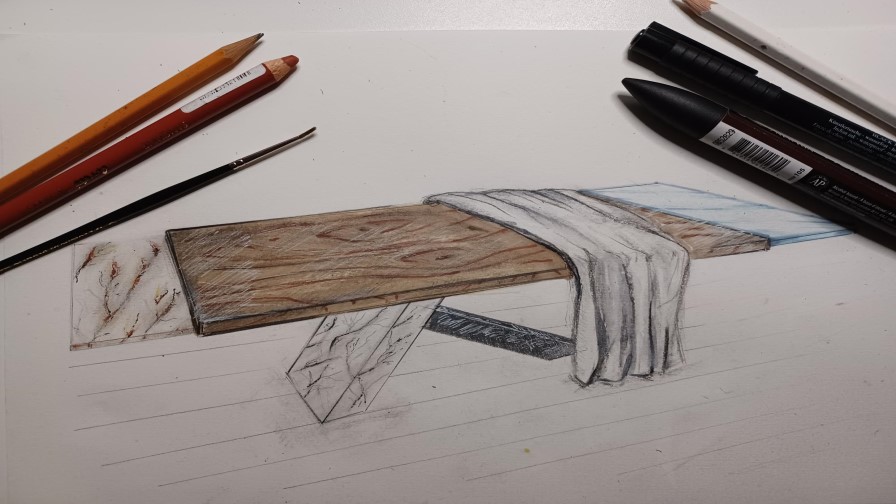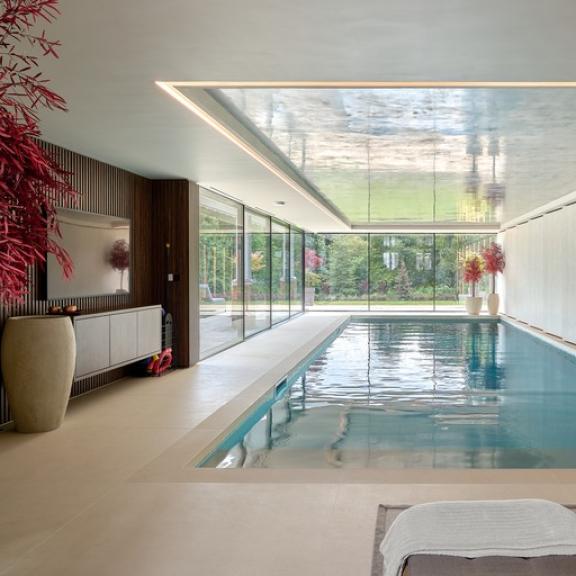How Hand Drawing Can Boost Your Interior Design Skills
Discover how hand drawing can allow you to create amazing renderings for your interior design projects

Hand drawn rendering is often the starting point on interior designs projects, allowing clients to immediately see an interior designer's vision but for some interior designers sketching and rendering isn't their natural comfort zone. We asked experienced interior designers Lester Bennet and Charles Leon and architect Gianfrancesco De Falco, the benefits of sketching and how designers can start incorporating sketching into their projects.

What value do you consider sketching to have in interior design?
Gianfrancesco De Falco Sketching plays a crucial role in interior design. It offers numerous valuable benefits to the design process, as conceptualisation, allowing designers to quickly explore concepts, and to visualise ideas but also, for communication, helping effectively translate abstract ideas into tangible representations. I always use my sketching ability during meetings or on-site visits, adding speed to the design process capturing design inspirations and making immediate adjustments. Sketching enhances client’s engagement, helping them to visualize and to connect with the design concepts on an emotional level.
Charles Leon Sketching by hand is relevant to all professions, not just interior design; it's a thinking process. There is something special that happens when you engage the physical and the mental processes together. Interestingly several studies have shown that using hand-written notes and sketching increases memorisation and creativity. Visualising and communicating rapidly through sketching is a fundamental skill for designers. However, there is also the benefit of seeing more clearly when sketching by observation and from imagination. Sketching improves cognitive and creative skills in a way that computers can't. An essential part of a designer's life is to convince others, clients etc., of an idea. Sketching, particularly when explaining a live concept in front of a client or colleague, inspires them to use their imaginations and buy into your vision. Sketching enabled Darwin to visualise the evolutionary tree of life and Francis Crick to visualise the structure of DNA. Sketching is a thinking tool.
Lester Bennett I place a very high value on sketching and hand drawing. There are many reasons why but two of the most important I think are:
- For the designer, in conceiving his/her designs, hand drawing is immediate. There is no interface and so thoughts can be rapidly translated into images and amended time and again; working through initial concepts, layouts, proportions etc often using layers of tracing paper. There is no process or procedures to go through, it is from the brain to the hand to the paper. It is not precious or time consuming if change is needed and minute adjustments are easily manipulated.
- Secondly, for the client, it is many things; Impressive - as most clients seem overawed with one’s ability to conjure images in front of their eyes; Inclusive - as the client isn’t presented with a hard image which seemingly cannot be altered or if so, expensive to do, and so feels part of the design process when their comments can be incorporated there and then; Expressive - variation in the weight of a hand drawn line or hand rendering of shadow etc can create atmosphere and enliven the image.
Do you believe anyone can develop their hand drawing and rendering skills?
Gianfrancesco De Falco With dedication and practice, anyone can develop their hand drawing and rendering skills to a satisfying level. While some individuals may have a natural inclination or talent for drawing, anyone can improve their skills with effort and willingness to learn.
Studying the fundamentals, understanding the basics of perspective, proportion, shading, is crucial. Same as experimenting with different techniques and drawing tools, such as pencils, pens, markers, charcoals, etc, to explore their unique qualities. It’s important to be patient and persistent and not get discouraged by initial setbacks. Remember, the goal is not necessarily to become a professional artist but to enjoy the process of learning and expressing your ideas through drawings.
Charles Leon I like using the metaphor of driving a car for sketching. At first, everything is complex and requires massive amounts of attention, but reasonably soon, driving becomes almost automatic and we all reach a reasonable level. However, some people take driving to a much higher level, like formula one drivers. So yes, I believe sketching is just a skill that anyone can learn with practice; in the same way, we can learn another language.
Lester Bennett I certainly believe that most people can be taught elementary drawing, in particular perspective. An interior drawing relies to a degree on fairly rigid perspective and this is almost scientific in its execution. The basic principles are fairly easy to understand and with a little practice, and a ruler, simple interior images can be achieved with a degree of success. I prepared a guide to help designers create perspective interior drawings which I believe is still distributed occasionally by the BIID to support our “Confident sketching” workshops, events which Charles and I conduct for the Institute.
By using a ruler for perspective one is not reliant solely on the ability to control one’s freehand mark making. Although, of course, there is a need to be able to construct some elements freehand, so practise is essential regardless!
Why do you prefer to offer a hand drawn initial rendering as opposed to one created using software?
Gianfrancesco De Falco The choice between a hand drawing rendering and one created using software. depends on individual circumstances and requirements and on factors such as personal preference, project requirements and time constraints. I use both method but at different stages during the design process. Hand drawn rendering has an appealing uniqueness as a support to the initial phase of the process when ideas and concepts need to be quickly visualized. Then, software generated renderings will be part of the final presentation to give an extremely realistic visualisation of the result, both aesthetically and functionally. Ultimately, both approaches can yield impressive results and I recommend, if possible, combining both methods to offer the best possible service to clients, offering authenticity and uniqueness but also precision and efficiency.
Charles Leon I think that hand drawing has its place, and CGI has its place. Hand sketching is a very compelling way to develop a concept in its early stages and a very rapid way to communicate ideas (assuming you reach a reasonable level of skill). I think CGI should be used once an idea is sufficiently developed and consolidated. The problem with CGI is that it presents something that is so "finished" that the clients feel they have to take it or leave it. Design is a process (although most clients don't understand this). Better design develops with effort and time. Sketching is a phenomenal design-thinking tool.
Lester Bennett Hand drawings offer the client an idea, an idea that is not fully resolved and thus can rapidly be changed or developed as the designer desires or to accommodate a clients’ request. It is more inclusive and also leaves room for speedy design development, it is not ‘written in stone’! It is my belief, although I’m sure there will be those who disagree, that CGIs presented too early in the design process can cause an obstruction to some degree in one’s vision. It restricts both the designer’s and the client’s ability to develop an idea in a way that could be more creative.
Overall, the ability to produce hand drawings accommodates the speed of one’s design thinking, leading to a quicker process in producing design solutions ready to discuss with the client, which in turn reduces programme time, and thus is more expedient and financially beneficial to your practice.
Learn more from Gianfrancesco and earn CPD hours with Freehand Rendering for Interior Designers.
Explore new resources from the BIID. Seeing a padlock? Just login or become a member to view.
View the highlights from our 60th anniversary party
We asked Anna Burles: What makes the perfect software?
Discover the smart home technology awards with Platinum Partner, CEDIA
Explore the latest, member-exclusive, templates designed to make your life easier.
University of Gloucestershire wins the BIID Student Design Challenge 2025.





